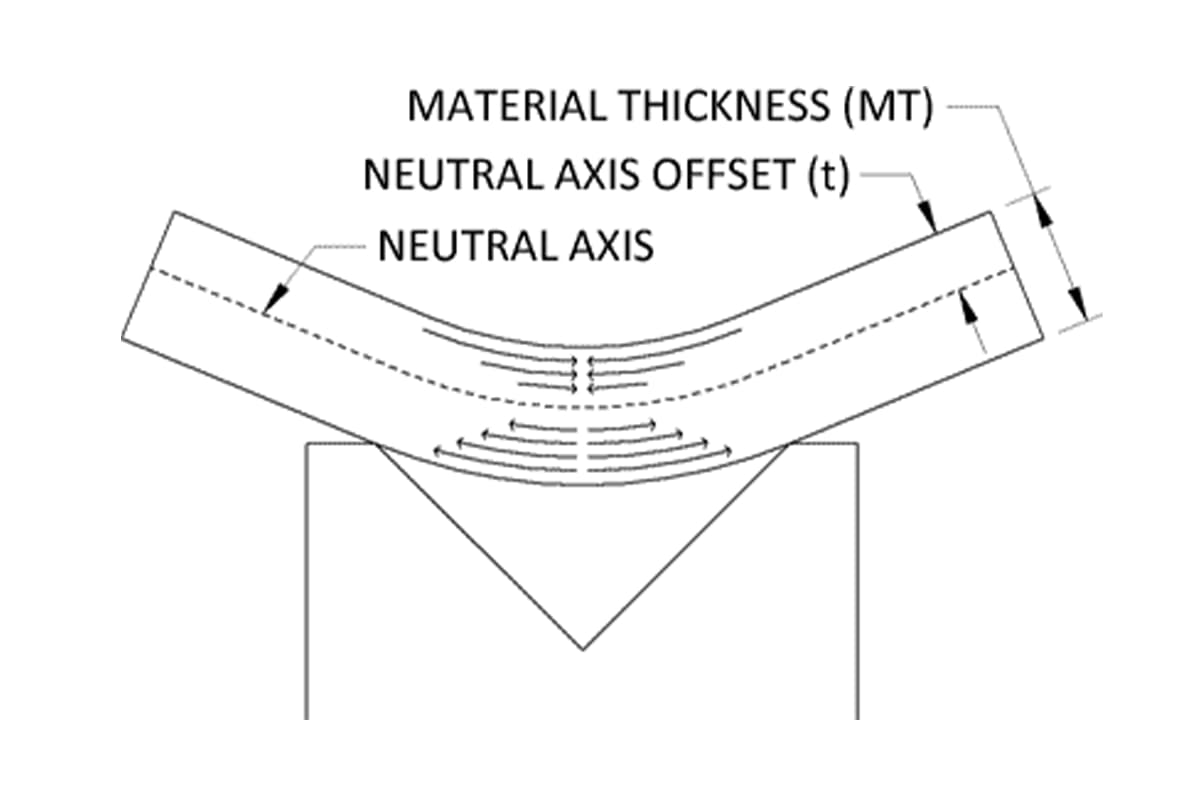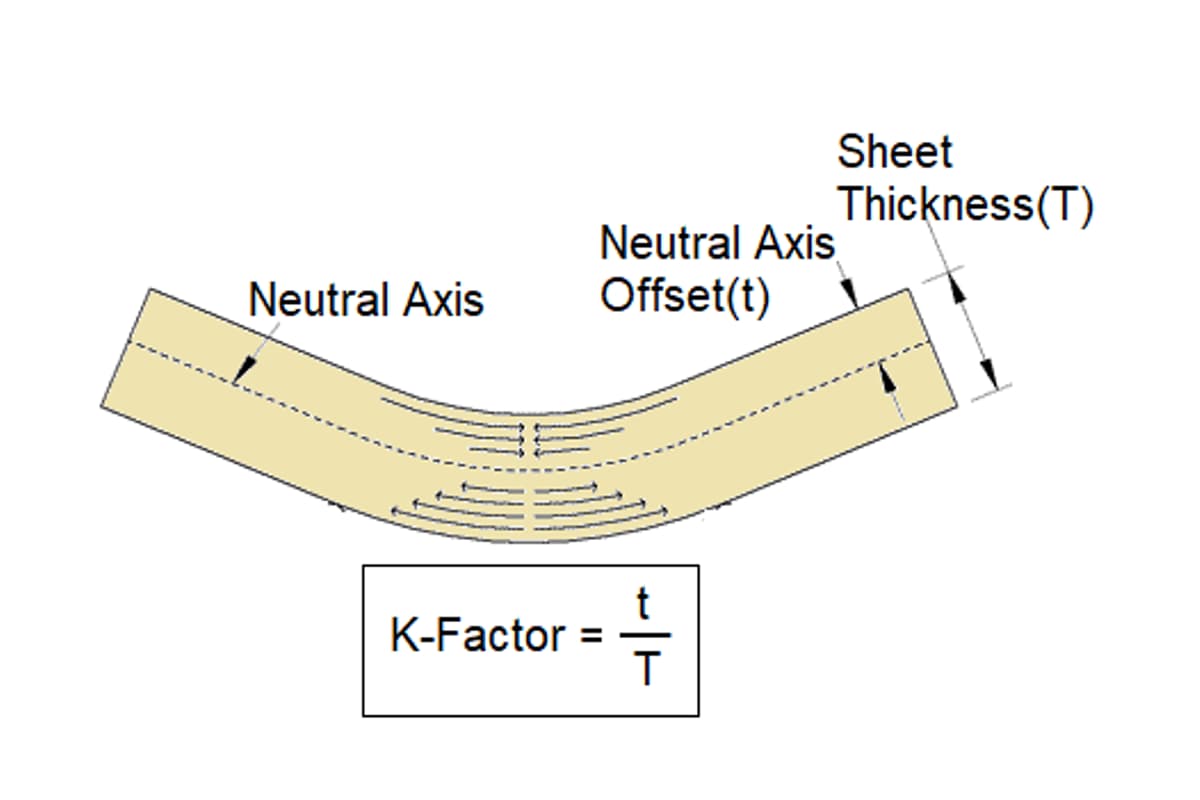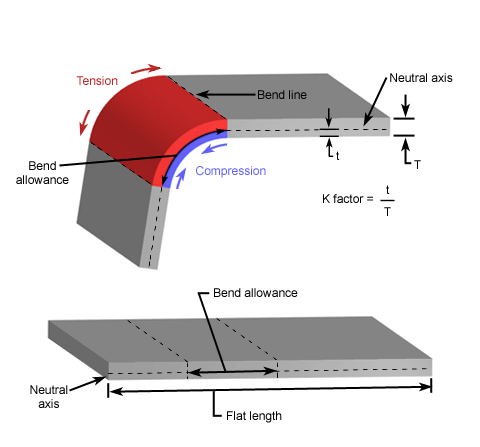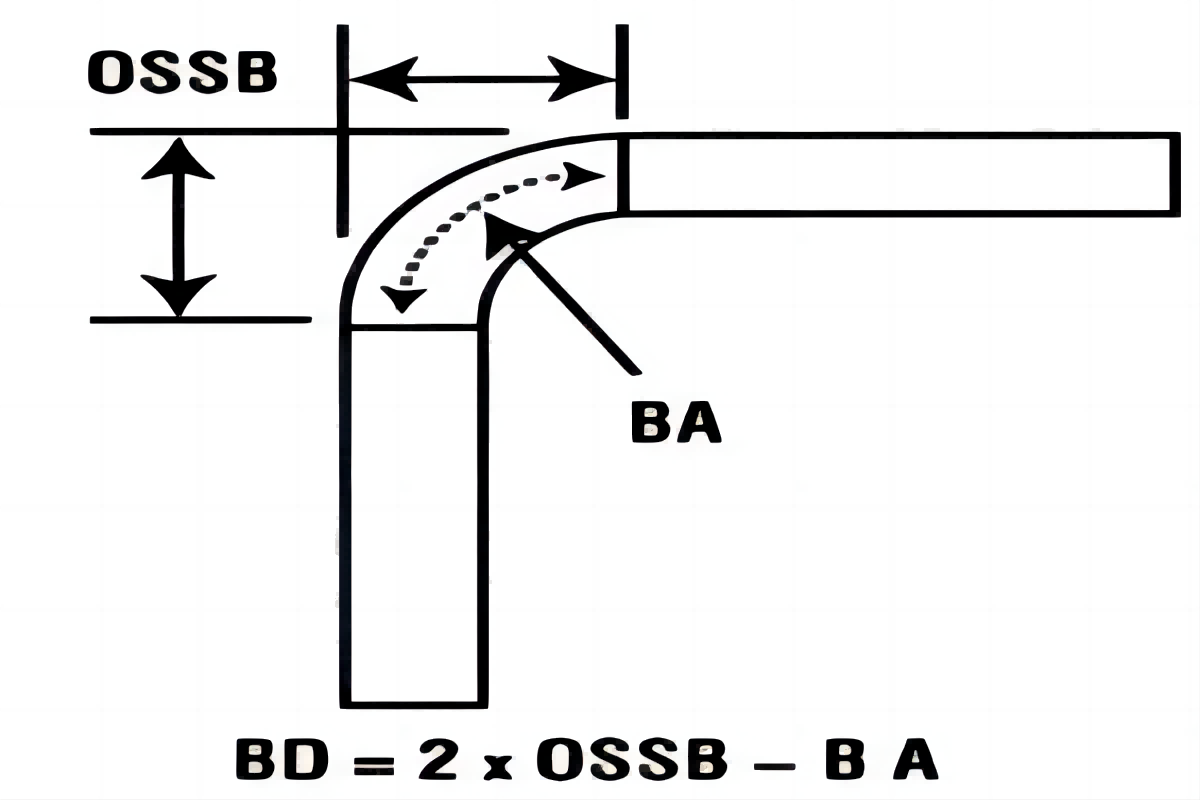Bend deduction is a critical aspect of press brake bending in precision sheet metal fabrication. The size of the workpiece, as depicted in a graphic design drawing, is different from its size in the bent state. During the press brake bending process, the tension stretches the outer material, causing it to elongate, while the inner material is compressed. The neutral axis remains unaffected by pressure or tension. Hence, its length remains unchanged. As a result of these changes, the size of the workpiece after bending is different from the size of the flat pattern in sheet metal part drawings. To achieve the correct flange length and the bending point, you need to calculate the sheet metal bend deduction, which represents the amount to be subtracted from the workpiece size after bending. In simpler terms, Bend Deduction (BD) refers to the extent to which the sheet is stretched after the tension applied during bending is released. Thus, the value of bend deduction is equal to the difference between the total flange length and the total flat length. The parameters required for calculating bend deduction are based on material thickness, bending angle, bend radius, and K factor. The K factor, the ratio of the distance between the neutral line and the material edge to the material thickness, is determined by the material thickness and bending method. The formula for the K factor is as follows, easily workable with any scientific calculator: K = t/T Where t is the distance from the neutral line to the material edge, and T is the material thickness. The range for the K factor is generally between 0.3 and 0.5. Different materials and thicknesses affect the choice of the K-factor: The bend allowance describes the length of the neutral axis between the bend lines, or in other words, the arc length of the bend. By definition, it is the arc length of the bend as measured along the neutral axis of the material. It is important because it allows us to cut sheet metal precisely and produce a bent metal piece. Calculate the bend allowance formula: Where: In practical operations, the inside radius (IR) can be measured using the following methods: Material thickness can be measured using a vernier caliper or a micrometer: Although modern bend deduction charts are relatively accurate, older charts have serious variances. If we know the bend allowance (BA) and the outside setback (OSSB), we can quickly calculate the bend deduction. BD=2 · OSSB - BA The calculation formula of outside setback (OSSB) is: Where: The Bend Deduction BD is defined as the difference between the sum of the flange lengths (from edge to the apex) and the initial flat length. When we know these parameters, the bend deduction calculation formula can also be: Where K represents the K factor, R and IR both represent the inner radius, T represents material thickness, B represents the bending angle, and MT also represents plate thickness. Using the two formulas we have explained, the sheet metal bending calculation is simple. To illustrate, let's calculate these parameters for a 90-degree bend with a material thickness of 2 mm and an inside radius of 3 mm, assuming a K factor of 0.42. 1. K Factor: K=0.42 2. Bend allowance: 3. Outside setback: 4. Bend Deduction: The K-factor is a ratio that represents the location of the neutral axis. It typically ranges from 0.3 to 0.5. Different materials and thicknesses affect the choice of the K-factor: Different materials and thicknesses affect the calculation of Bend Allowance and Bend Deduction: Adjust the calculation methods for different materials and thicknesses to ensure accuracy: Calculating all these values manually isn’t the only way to find the right dimensions for your material. If you’re using a CAD software with sheet metal tools, you can usually input the K-Factor and the bend radius values directly into the software and it will give you the same reduced values. It just depends on what software you’re using. In this article, we delved into the concept of Bend Deduction and its calculation methods. Bend deduction refers to the amount of material we need to take from the metal sheet to achieve the correct length. By calculating the bend deduction, we can accurately adjust the bend points and length of the flanges to ensure that the final dimensions of the workpiece meet the design specifications. Calculating Bend Deduction requires considering parameters such as material thickness, bend angle, bend radius, and the K-factor. Mastering this knowledge is crucial for any professional involved in bending operations. ADH Machine Tool is a professional manufacturer of sheet metal processing machines with extensive experience in the metal forming and fabricating industry. We offer press brakes, shears, fiber laser cutting machines, panel benders, and more. For more information on bending and our products, please feel free to contact us or visit our website for press brake information. Get a quote today! What Is K Factor? Bend Allowance Chart Antibacterial Powder Coating,Antibacterial Coatings,Antibacterial HLM Powder Coating CO,.Ltd , https://www.holymepowder.comI. What Is Bend Deduction?

II. How to Calculate Bend Deduction?
1. K factor

2. Bend allowance




3. Bend deduction


4. Example Calculation
5. Adjustments for Different Materials and Thicknesses
(1) Adjusting the K-Factor
(2) Adjusting Bend Allowance and Bend Deduction
6. Practical Application Scenarios
(1) Measurement and Calculation Steps
(2) Adjusting Calculation Methods
III. Conclusion
IV. FAQs
Antibacterial powder coatings are widely used in medical equipment, food processing equipment, public places, sanitary facilities, and other places and equipment that require cleanliness and hygiene to be maintained.
Their advantages include long-lasting antibacterial effects, resistance to the influence of cleaning agents and disinfectants, as well as being friendly to both human health and the environment.
The use of antibacterial powder coatings can effectively reduce the risk of bacterial transmission, ensuring people's health and safety.
Bend Deduction Calculation: A Step-by-Step Guide
Antibacterial powder coating is a special type of powder coating that has the function of inhibiting bacterial growth.
This type of coating typically contains antibacterial agents, which can form a protective antibacterial layer after the coating is cured, effectively inhibiting the reproduction and spread of bacteria.